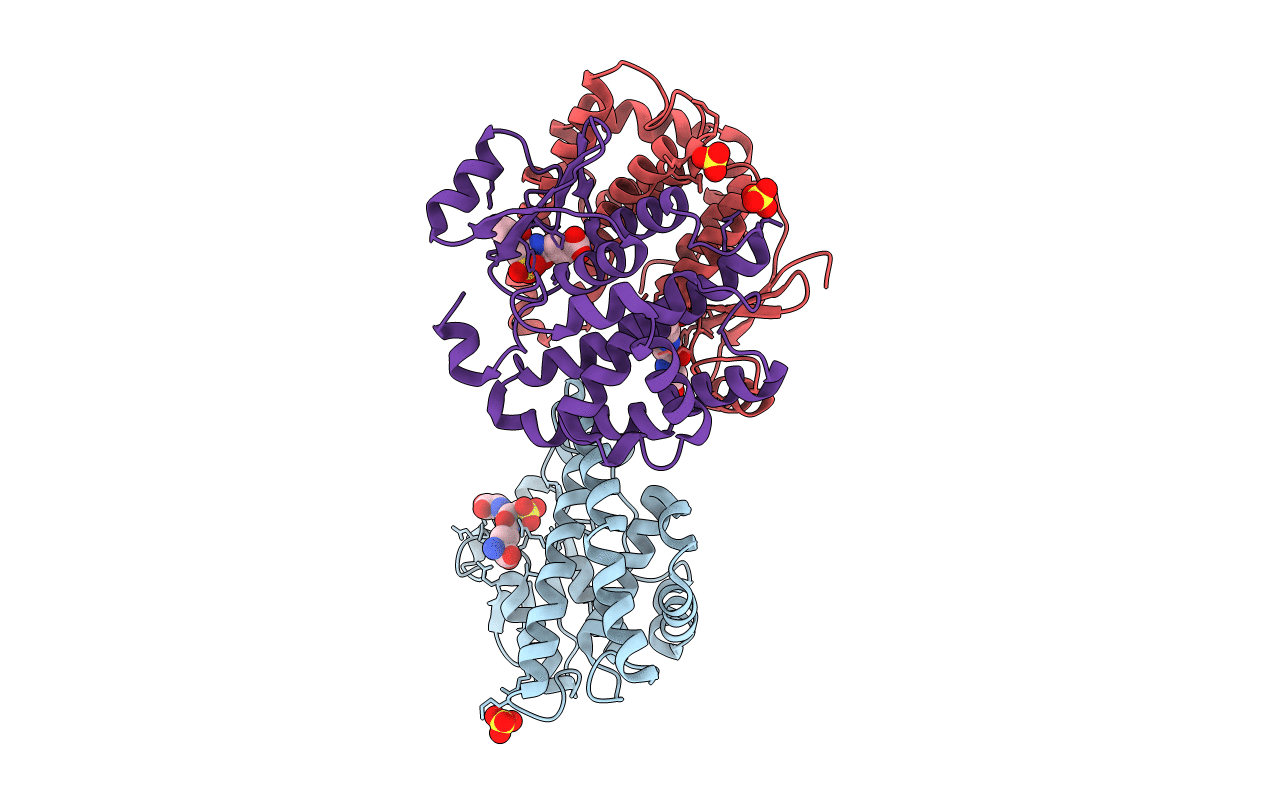
Deposition Date
2000-04-19
Release Date
2001-02-07
Last Version Date
2024-02-07
Entry Detail
PDB ID:
1EV9
Keywords:
Title:
RAT GLUTATHIONE S-TRANSFERASE A1-1 MUTANT W21F WITH GSO3 BOUND
Biological Source:
Source Organism:
Rattus norvegicus (Taxon ID: 10116)
Host Organism:
Method Details:
Experimental Method:
Resolution:
2.20 Å
R-Value Free:
0.29
R-Value Work:
0.23
Space Group:
C 2 2 21


